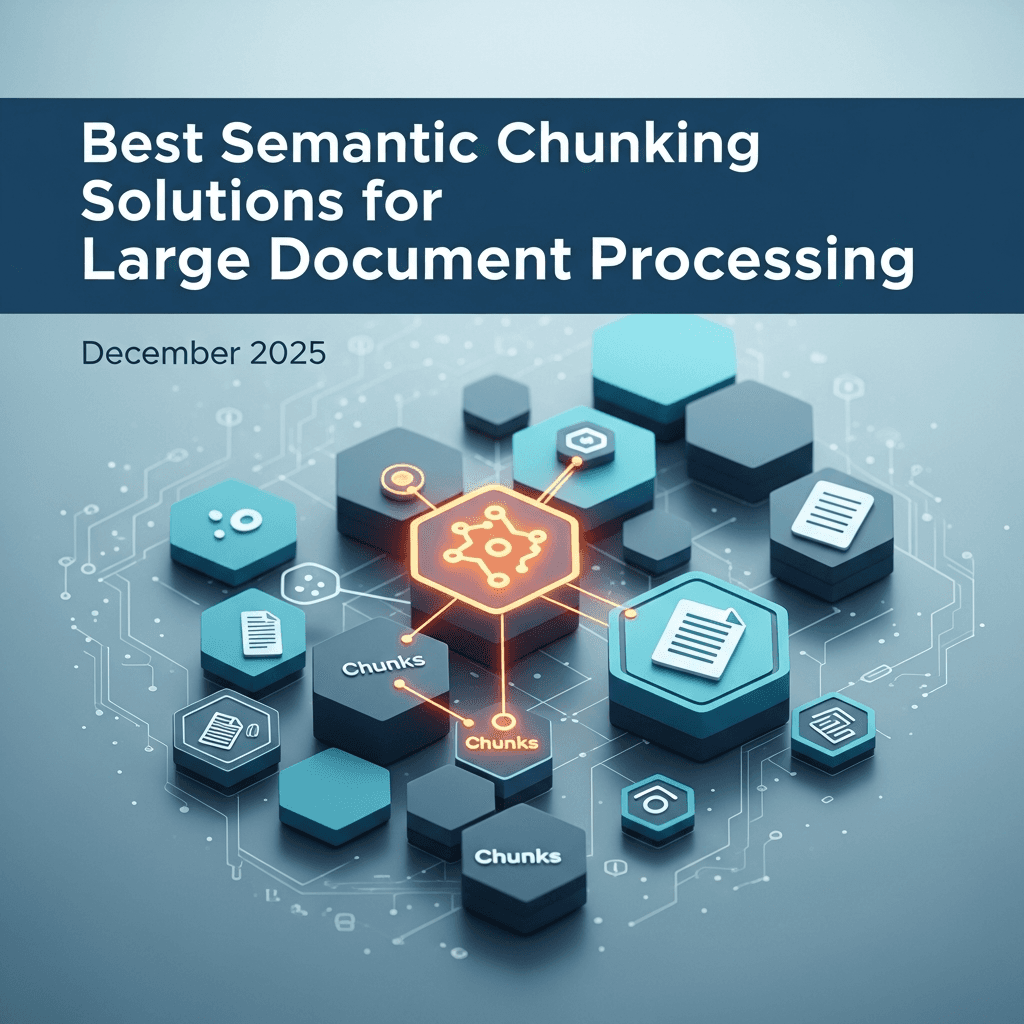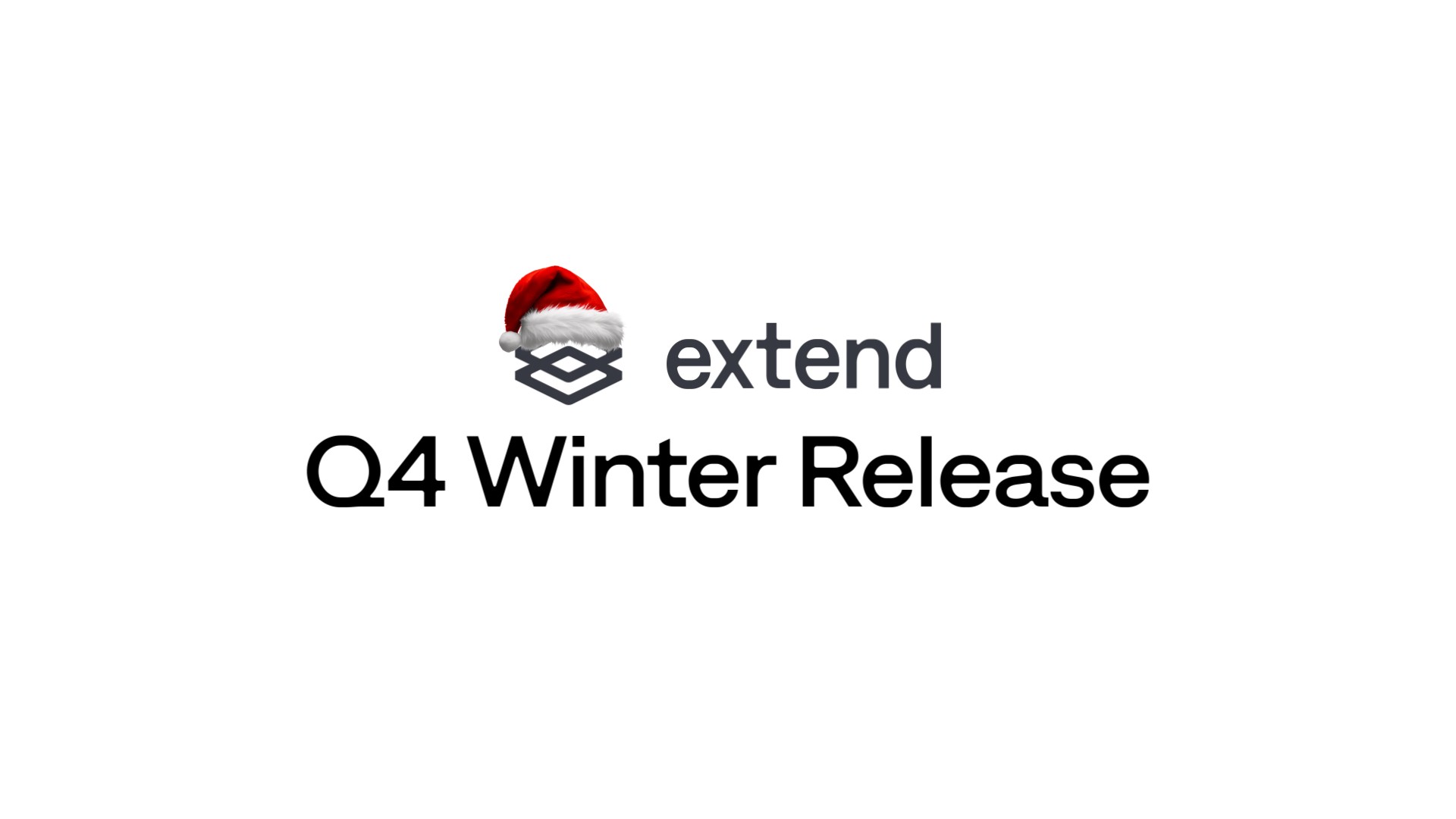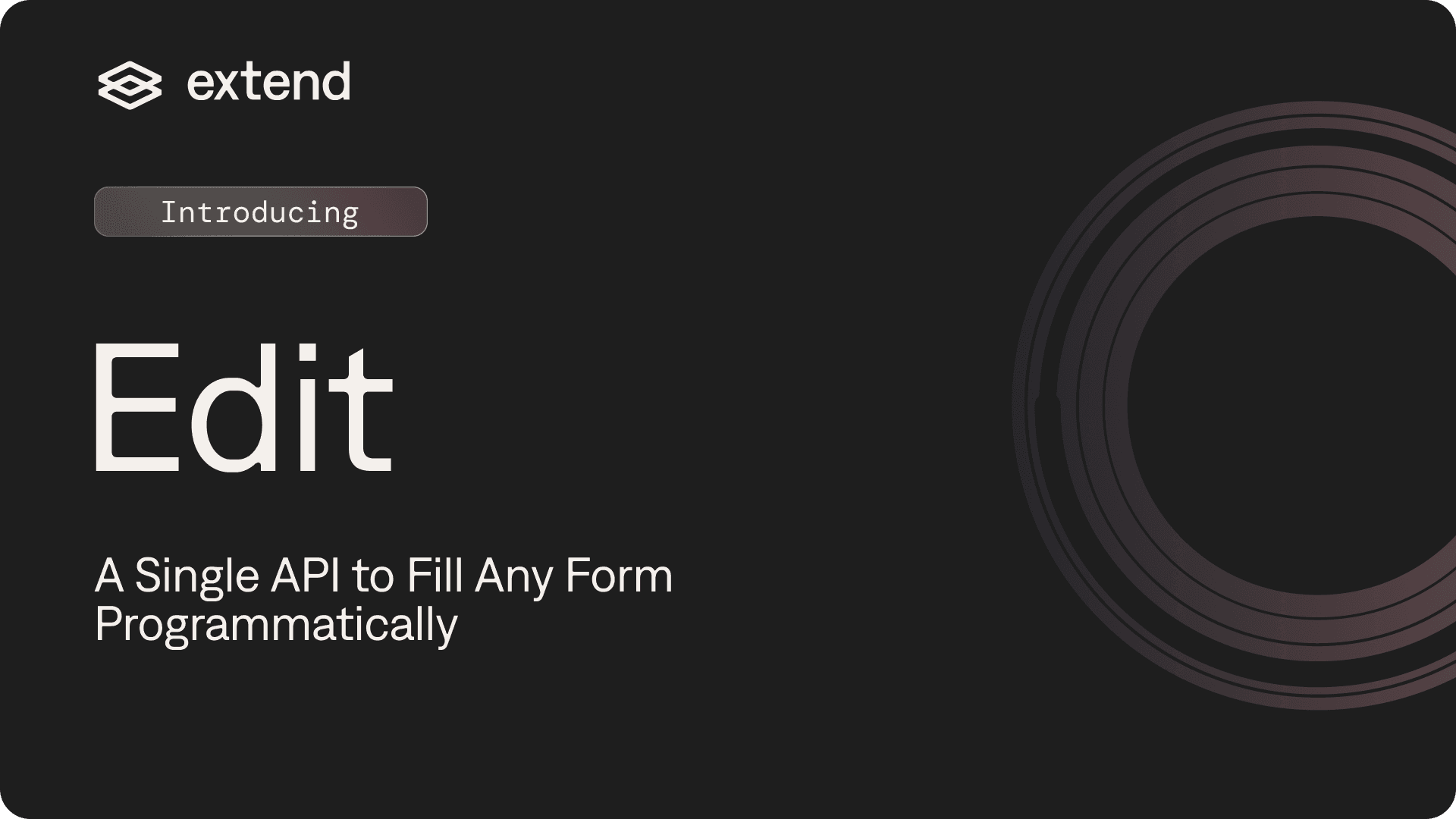7 MIN READ
Sep 18, 2025
Case Study
How Brex Reached 99% Accuracy Across Millions of Financial Documents
Kushal Byatnal
Co-founder, CEO
“Extend outperformed every solution we tested — other vendors, open source, and even going direct to foundation models. It now powers key document workflows across 30,000 customers, helping us build the most intelligent and modern financial platform out there.”
— Pedro Franceschi, CEO, Brex
Brex is one of the fastest growing fintech companies of all time, with products spanning corporate cards, expense management, bill pay, travel, and banking. Behind the scenes, there’s a deceptively hard problem that shows up in almost every product surface: documents.
Invoices, receipts, bank statements, and W-9s are the system of record for financial workflows. A single error can lead to downstream errors that erode customer trust. If you want to ship magical UX for finance teams, documents have to just work.
Here’s how Brex tested every option in the market, migrated millions of documents off of legacy OCR vendors, and raised the industry bar with 99% accuracy.

TLDR; What Brex’s journey shows
If you’re building product experiences on top of documents, a few lessons stand out:
Benchmarks > vibes. Uploading 1–2 docs to a model and eyeballing the outputs isn't scientific enough for something your users will feel. Invest in building an eval set, and run a true test across vendors and models. Pay attention to accuracy, latency, and how you’ll handle edge cases over time.
Raw accuracy is necessary, but not sufficient. The combination of models + tooling is what enables you to achieve 99% accuracy reliably at scale, and iteration speed is what lets you keep up when new use cases and data formats show up.
The moat is downstream. The real advantage comes from what you build on top of the data. In-house builds seem tempting for flexibility, but they burn cycles and slow product velocity. If you can get that same flexibility without the cost, you stay ahead. Working with Extend is like having an in-house doc processing team, constantly making your pipelines better in the background.
The challenge Brex was solving for
From day one, Brex’s products depended on documents, with each surfacing a different challenge:
Bill Pay requires low latency, so users aren't stuck waiting to upload invoices
Expense Management needs custom parsing logic to power features like detecting alcohol purchases on receipts and flagging them as out-of-policy
Tax and Onboarding flows demand near-perfect accuracy on bank statements and W9s
“Before Extend, document processing at Brex was fragmented across four different vendors. Accuracy was mixed, and when things went wrong, we heard about it from customers immediately.”
— Andrew Smith, Senior Product Manager, Brex
Documents were front-and-center in the product, and Brex needed them to feel effortless and reliable.
"We wanted to provide users with a state-of-the-art experience for document uploads—something that felt as seamless and modern as the rest of Brex."
— Andrew Smith
…but fragmented vendors and mixed accuracy made that experience impossible to deliver.
Benchmarking every option on the market
When Brex set out to solve document processing once and for all, the goal was clear: raise the industry bar for document upload flows across every part of the product. They ran a comprehensive benchmark focused on accuracy, latency, cost, and customization.
Here’s what they found:
Building in-house with foundation models (e.g. OpenAI)
Of course, Brex also considered building instead of buying (and understandably so). With one of the strongest engineering teams in the world, there’s no doubt Brex could have done it.
Foundation models provided a strong baseline out-of-the-box, and feeding in raw PDFs often got 80% — 90% of the way there.
But Brex wanted to raise the bar beyond just “good enough”. Their north star was hitting 99% accuracy on multiple document types, all with low-latency so their users didn’t have to wait.
Pushing foundation models to 99% accuracy requires heavy context engineering: layout-aware parsing, smart chunking strategies, vision models (VLMs) for messy handwriting, and handling edge cases across lengthy tables and inconsistent layouts.
On top of that, they were still missing the infrastructure necessary to make their document pipelines production-ready:
Without automated prompt engineering, every new format required manual effort and testing.
No built-in evals made it hard to measure accuracy or catch regressions as edge cases emerged.
No bounding boxes meant users couldn’t trace outputs back to the source.
Inconsistent latency at scale, which was a dealbreaker for anything user-facing.
Building all of that in-house would take months, distract engineering focus away from core products, and leave them on the hook for maintaining it forever.
Open source (e.g. Donut, LayoutLM)
After initial testing, Brex’s engineering team quickly realized that hitting production-grade accuracy with open-source options would require extensive fine-tuning. Plus, deploying them reliably at scale meant additional infrastructure burden on the team.
Other startups
Other vendors showed promise in controlled settings, but struggled to keep up on accuracy in larger scale tests. They also lacked the product tooling and workflows needed to stand up new use cases quickly.
Extend
Then Brex tested Extend, and it outperformed every option.
Extend’s pre-processing pipelines, powered by OCR and vision models, handled all the context engineering necessary for LLMs to be effective on messy, real-world edge cases.
To meet Brex’s latency requirements without sacrificing accuracy, Extend fine-tuned dedicated models for their workloads and deployed them on private GPU infrastructure. That avoided latency spikes, kept costs low, and resulted in the highest accuracy Brex had ever seen (with many document tasks reaching 99%+).
The product experience within Extend sealed it:
Evaluation suites to track performance across formats as documents evolve
First-class support for classification, extraction, and document splitting
Flexible processing modes to trade off between low-latency user-facing tasks vs. high performance async work

The result? Brex shipped Bill Pay and Receipt parsing on Extend, and set the bar in the industry for speed and accuracy.
Extend now processes millions of documents at Brex
Brex has now standardized on Extend for document processing across the company. The impact is clear:
99% accuracy across messy, real-world documents
New use cases go live in weeks
Engineers freed up to focus on building downstream product experiences, not maintaining document pipelines
For Brex’s 30,000+ customers, documents now feel as seamless and polished as the rest of the platform
It started with invoices in Bill Pay. Then came receipts, where Extend’s low-latency models made real-time reimbursement logic possible, instantly categorizing expenses and flagging out-of-policy purchases like alcohol. From there, the team rolled out support for bank statements in onboarding and W-9s for tax flows (with more use cases on the way).

Each rollout followed the same pattern: production-ready in weeks, with the highest accuracy Brex had ever seen (with certain document tasks reaching 99%+).
"Extend has continued to be more and more core to a lot of different parts of our platform. We’ve heard a lot less user complaints of bad experiences with our product because the accuracy rates have improved.”
— Andrew Smith
As a flexible developer platform, Extend gave Brex the same level of control and configurability as an in-house build. They could customize each use case as needed without spending cycles on handling edge cases. And with engineering-led support from the Extend side, they were able to move faster than ever.
"Honestly, it felt like we suddenly had a whole in-house team dedicated to documents without having to staff it. We got the flexibility of an in-house build, with better accuracy, lower costs, and no maintenance burden."
— Andrew Smith
Today, every document that flows through Brex runs on Extend. And across the board, accuracy and latency are industry-leading.
Looking Forward
As Brex expands into Europe under its new EU license, Extend makes the transition seamless. New document formats, languages, and compliance rules don’t require new OCR systems or re-engineered pipelines. Every document, from a German invoice to a French receipt to a UK bank statement, runs with the same low latency and 99% accuracy Brex customers already trust. Taking on Europe’s new market brings plenty of challenges, but documents won’t be one of them.
WHY EXTEND?




